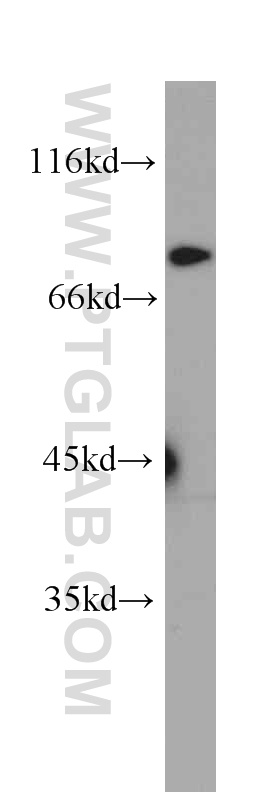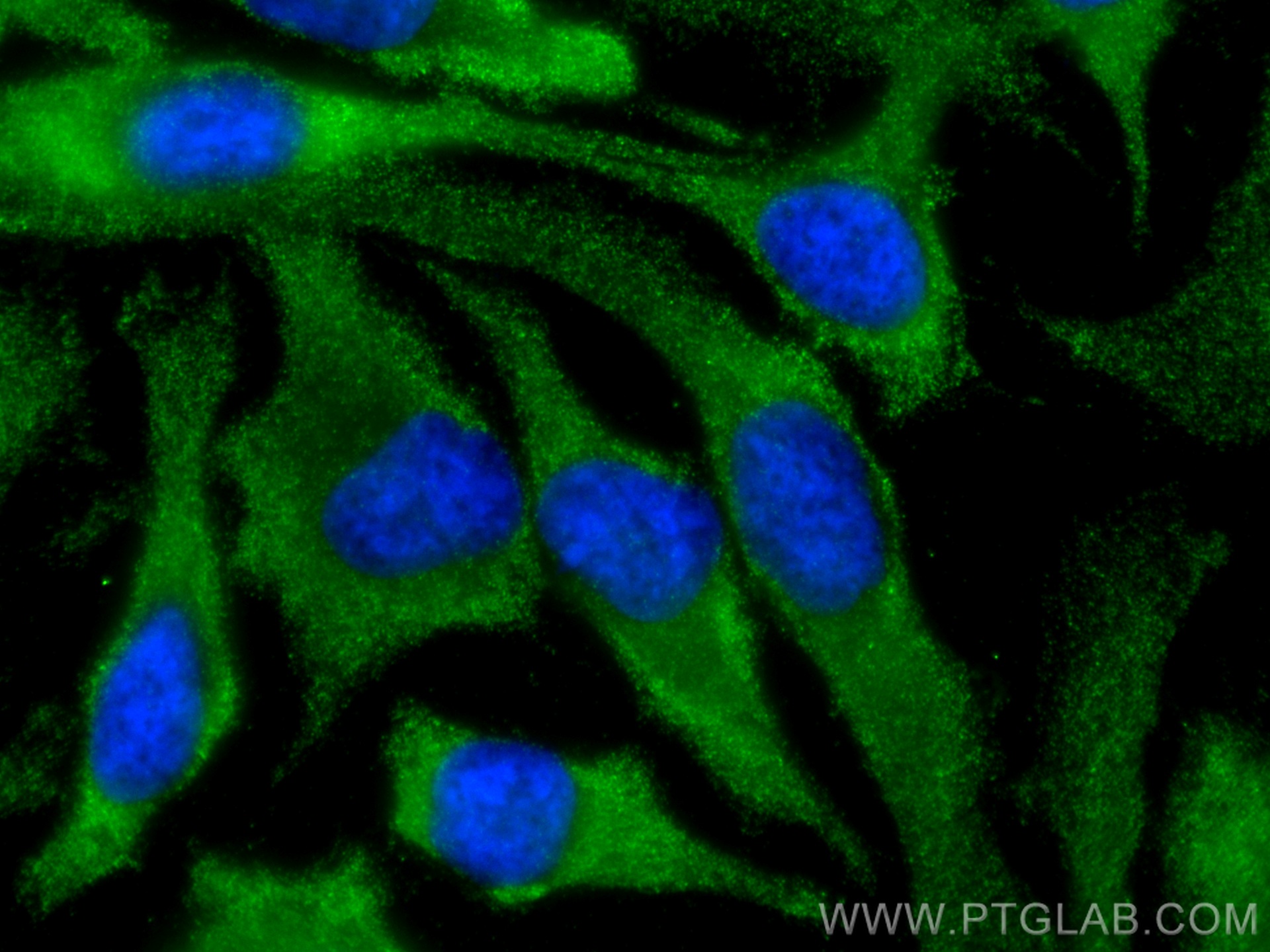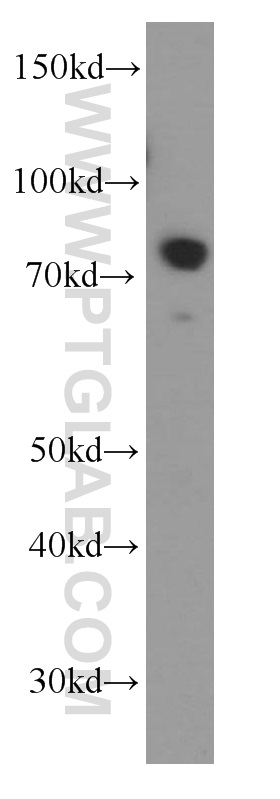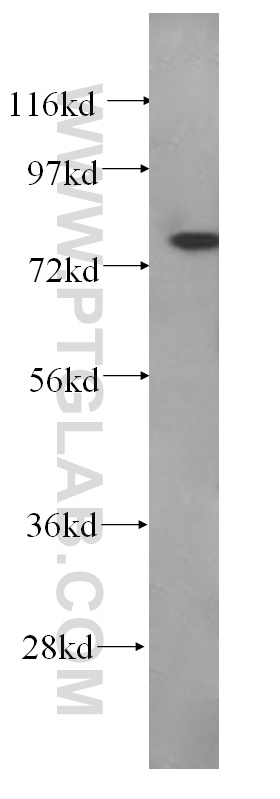验证数据展示
产品信息
60079-1-PBS targets BORIS in WB, IF/ICC, Indirect ELISA applications and shows reactivity with human, mouse samples.
| 经测试应用 | WB, IF/ICC, Indirect ELISA Application Description |
| 经测试反应性 | human, mouse |
| 免疫原 | BORIS fusion protein Ag1003 种属同源性预测 |
| 宿主/亚型 | Mouse / IgG1 |
| 抗体类别 | Monoclonal |
| 产品类型 | Antibody |
| 全称 | CCCTC-binding factor (zinc finger protein)-like |
| 别名 | BORIS, Cancer/testis antigen 27, CCCTC binding factor, CT27, CTCF like protein, CTCF paralog, CTCF T, CTCFL, Zinc finger protein CTCF T |
| 计算分子量 | 82 kDa, 75 kDa |
| 观测分子量 | 75 kDa |
| GenBank蛋白编号 | BC130486 |
| 基因名称 | BORIS/CTCFL |
| Gene ID (NCBI) | 140690 |
| RRID | AB_1211604 |
| 偶联类型 | Unconjugated |
| 形式 | Liquid |
| 纯化方式 | Protein A purification |
| UNIPROT ID | Q8NI51 |
| 储存缓冲液 | PBS only , pH 7.3 |
| 储存条件 | Store at -80°C. The product is shipped with ice packs. Upon receipt, store it immediately at -80°C |
背景介绍
CTCFL, also named BORIS (for brother of the regulator of imprinted sites) is a paralogue of the 11 zinc-finger transcription factor, CTCF. It is predominantly expressed in spermatocytes in the testis, also can be found in tumors and cancer cell lines. It mainly participates in insulator function, nuclear architecture and transcriptional control, which probably acts by recruiting epigenetic chromatin modifiers. It has a key role in gene imprinting in male germline, by participating in the establishment of differential methylation at the IGF2/H19 imprinted control region (ICR). Directly binds the unmethylated H19 ICR and recruits the PRMT7 methyltransferase, leading to methylate histone H4 'Arg-3' to form H4R3sme2.



